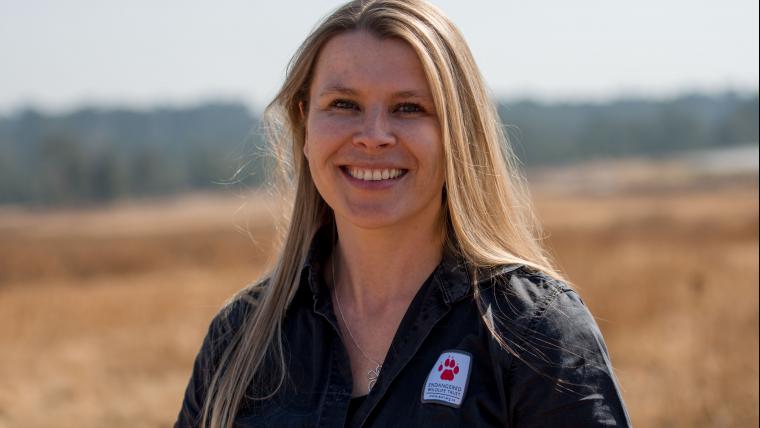
The veld has the secrets to our survival
The foundation of life is in the grasslands of South Africa. They’re essential to us and the hundreds of plant and animal species found in it. But the biome is disappearing, fast. We have irreversibly damaged over half of our grasslands, which we depend on for food and water security. Yet only 2.5% of the land that remains is formally protected – and many aren’t even aware. Catherine Hughes is determined to change that. Having spent her childhood on game reserves, Hughes developed a love for the environment and an innate desire to protect it.
“My dad taught me to appreciate nature,” Hughes says. The respect she learnt from her father, a marine biologist and passionate conservationist, influenced her livelihood. Today, Hughes manages the Threatened Grassland Species Programme at the Endangered Wildlife Trust. Her team focuses on lesser-known threatened species that live in the grass, such as the dragon-like sungazer lizard. But rather than working with individual species, the programme adopts a holistic approach to conservation that focuses on the entire ecosystem. Human activities such as mining, agriculture, and urbanisation threaten the extremely diverse grasslands. “It’s absolutely frightening how much of the land area is at risk,” she says. Hughes is working towards proclaiming nearly 100 000 hectares of grassland for protection by getting private landowners to conserve the biodiversity on their property.
“I believe that the first step we need to take is making sure that everyone is aware of the importance of these ecosystems to society,” Hughes says. The tiniest blades of grass and soil under our feet are crucial to our existence. By protecting our grasslands, we have the potential not only to save endemic flora and fauna, but also ourselves. “We can work together to create solutions,” Hughes says. Sustainability is possible.






























Please sign in to leave a comment